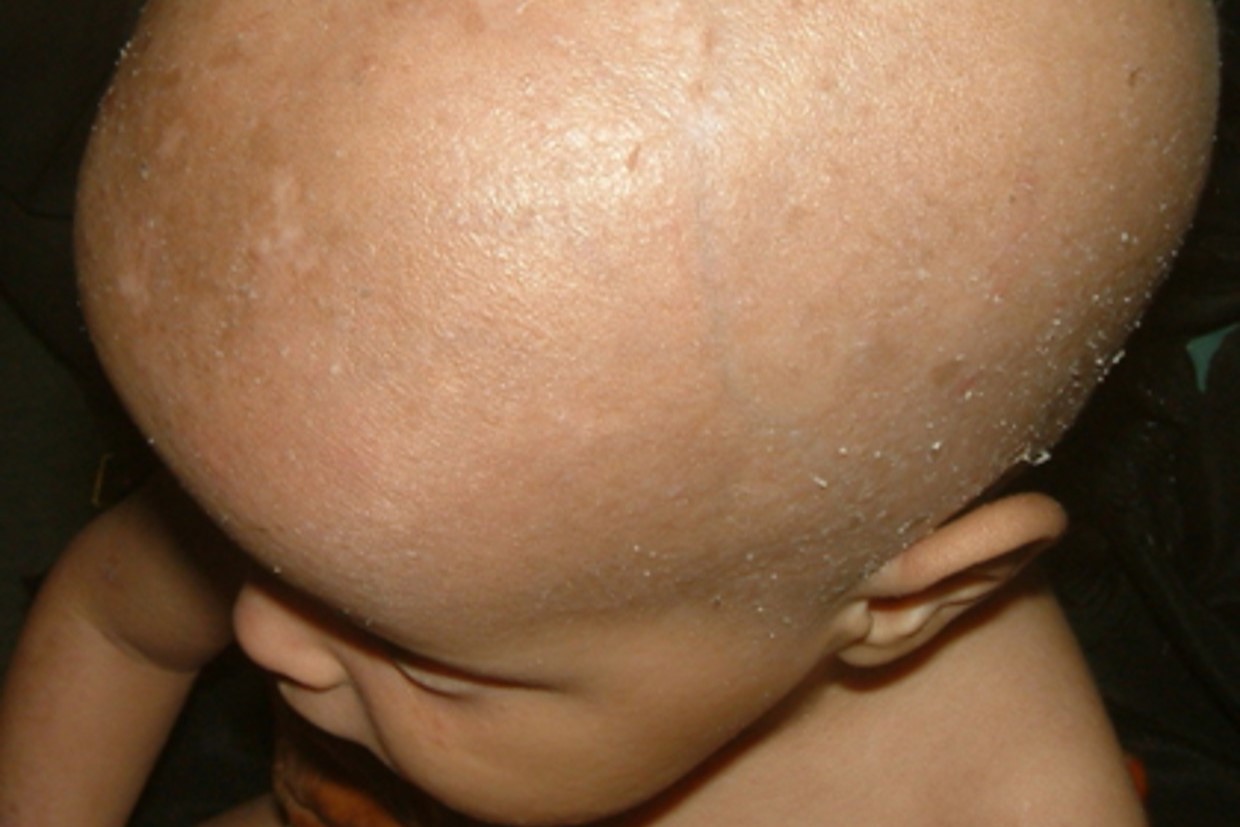
What is Ichthyosis Follicularis with Alopecia and Photophobia Syndrome? Imagine a condition that affects your skin, hair, and eyes all at once. Ichthyosis Follicularis with Alopecia and Photophobia Syndrome (IFAP) is a rare genetic disorder that does just that. This syndrome, primarily affecting males, is caused by mutations in the MBTPS2 gene. People with IFAP experience thorn-like skin projections, complete body hair loss, and extreme sensitivity to light. These symptoms can lead to severe complications, including vision loss and recurrent infections. With only about 40 reported cases worldwide, understanding IFAP is crucial for providing proper care and support to those affected.
What is Ichthyosis Follicularis With Alopecia And Photophobia Syndrome?
Ichthyosis Follicularis, Alopecia, and Photophobia (IFAP) Syndrome is a rare genetic disorder. It impacts the skin, hair, and eyes. Here are some key facts about this condition.
-
Definition and Prevalence: IFAP syndrome is a rare genetic disorder marked by ichthyosis follicularis, alopecia, and photophobia from birth. Only about 40 cases have been reported, making it extremely rare.
-
Genetic Cause: Mutations in the MBTPS2 gene, located on the X chromosome, cause this disorder. These mutations disrupt cholesterol balance and the ability to handle endoplasmic reticulum stress.
Clinical Presentation of IFAP Syndrome
The symptoms of IFAP syndrome are diverse and can vary in severity. Here are the main clinical features.
-
Ichthyosis Follicularis: This condition features widespread, non-inflammatory thorn-like follicular projections. Hyperkeratotic papules are most noticeable on the extensor extremities and scalp.
-
Alopecia: Complete body alopecia, including the scalp, eyebrows, and eyelashes, is a hallmark of this syndrome.
-
Photophobia: Sensitivity to light may start in infancy or early childhood, leading to progressive corneal scarring and vision loss in males.
Additional Symptoms and Complications
IFAP syndrome can also present with various other symptoms and complications. These can affect different parts of the body.
-
Collodion Membrane: Some newborns may have a collodion membrane, a shiny, tight film covering the skin.
-
Psoriasiform Plaques: These are red, scaly patches that can appear on the skin.
-
Angular Cheilitis: Cracks and inflammation at the corners of the mouth are common.
-
Periungueal Inflammation: Inflammation around the nails can occur, along with dystrophic nails.
-
Hypohidrosis: Reduced sweating is another symptom, which can lead to overheating.
-
Atopic Eczema: Some patients may also suffer from this itchy skin condition.
Ocular Symptoms and Vision Issues
The eyes are significantly affected in IFAP syndrome. Here are the main ocular symptoms.
-
Corneal Ulceration: Superficial corneal ulcers can lead to scarring and vision loss.
-
Corneal Vascularization: Blood vessels may grow into the cornea, worsening vision over time.
-
Other Eye Issues: Chronic tearing, cataracts, horizontal nystagmus, astigmatism, and myopia have been reported.
Systemic Involvement and Intellectual Disability
Beyond the skin and eyes, IFAP syndrome can affect other body systems and intellectual development.
-
Intellectual Disability: Ranges from mild to severe, often accompanied by short stature and microcephaly.
-
Seizures: Some patients may experience seizures.
-
Dysmorphic Features: These can include frontal bossing, choanal atresia, and large ears.
-
Other Anomalies: Cleft hands, intestinal issues like omphalocele and Hirschsprung disease, inguinal hernia, and renal, cardiac, and vertebral anomalies can also be present.
Sexual Development and Female Carriers
Sexual development and the impact on female carriers are also important aspects of IFAP syndrome.
-
Normal External Genitalia: Generally, external genitalia are normal, but cryptorchidism and hypospadias have been reported in some cases.
-
Female Carriers: Affected or carrier females may have milder symptoms, such as patchy alopecia and asymmetric body hair distribution.
Final Thoughts on IFAP Syndrome
IFAP syndrome is a rare genetic disorder that significantly impacts those affected. Characterized by ichthyosis follicularis, alopecia, and photophobia, it presents a complex array of symptoms. The MBTPS2 gene mutation on the X chromosome is the primary cause, leading to challenges in cholesterol homeostasis and endoplasmic reticulum stress. Patients often face additional issues like intellectual disability, dysmorphic features, and recurrent infections. Diagnosis relies on clinical features and genetic testing, with treatment focusing on symptom management. While topical keratolytics, emollients, and acitretin therapy offer some relief, intensive ocular care is crucial to prevent corneal scarring. Prognosis varies, with some patients experiencing severe complications. Understanding and managing IFAP syndrome requires a comprehensive approach, highlighting the need for ongoing research and support for affected individuals and their families.
Was this page helpful?
Our commitment to delivering trustworthy and engaging content is at the heart of what we do. Each fact on our site is contributed by real users like you, bringing a wealth of diverse insights and information. To ensure the highest standards of accuracy and reliability, our dedicated editors meticulously review each submission. This process guarantees that the facts we share are not only fascinating but also credible. Trust in our commitment to quality and authenticity as you explore and learn with us.


